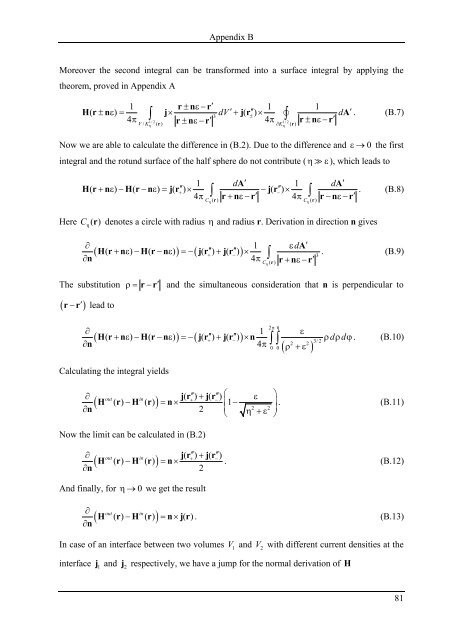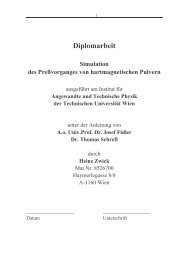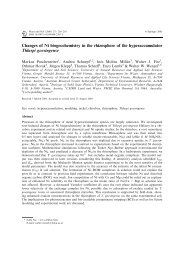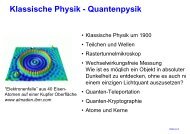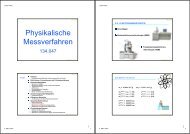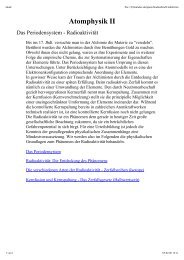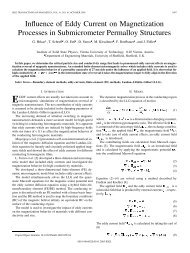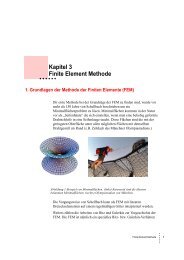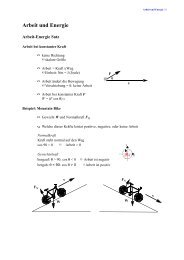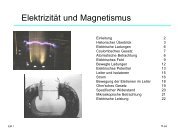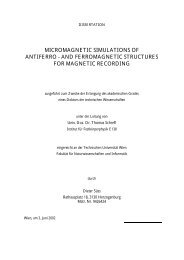Read Back Signals in Magnetic Recording - Research Group Fidler
Read Back Signals in Magnetic Recording - Research Group Fidler
Read Back Signals in Magnetic Recording - Research Group Fidler
You also want an ePaper? Increase the reach of your titles
YUMPU automatically turns print PDFs into web optimized ePapers that Google loves.
Appendix B<br />
Moreover the second <strong>in</strong>tegral can be transformed <strong>in</strong>to a surface <strong>in</strong>tegral by apply<strong>in</strong>g the<br />
theorem, proved <strong>in</strong> Appendix A<br />
1 r± nε−r′ 1 1<br />
Hr ( ± nε ) = × dV ′ + ( ′′ ) ×<br />
d ′<br />
4π ∫ j j r<br />
4π<br />
� ∫<br />
A . (B.7)<br />
r n r r± nε−r′ 3<br />
±<br />
1/2 1/2<br />
V / Kη ( r) ± ε− ′<br />
∂Kη<br />
( r)<br />
Now we are able to calculate the difference <strong>in</strong> (B.2). Due to the difference and ε→ 0 the first<br />
<strong>in</strong>tegral and the rotund surface of the half sphere do not contribute ( η � ε ), which leads to<br />
1 dA′ 1 dA′<br />
Hr ( + nε) −Hr ( −nε ) = jr ( ′′ ) × − ( ′′ ) ×<br />
π ∫ jr<br />
+ ε− ′ π∫ . (B.8)<br />
r n r r−nε−r ′<br />
+ −<br />
4 4<br />
Cη( r) Cη(<br />
r)<br />
Here Cη( r ) denotes a circle with radius η and radius r. Derivation <strong>in</strong> direction n gives<br />
∂ 1 εdA′<br />
∂n4π C r+ nε−r′ ( Hr ( + nε) −Hr ( −nε ) ) =− ( jr ( ′′ + ) + jr ( ′′ −)<br />
) ×<br />
3<br />
∫<br />
η ( r)<br />
. (B.9)<br />
The substitution ρ= r−r ′ and the simultaneous consideration that n is perpendicular to<br />
( − ′ )<br />
r r lead to<br />
∂ 1 ε<br />
( Hr ( + nε) −Hr ( −nε ) ) =− ( jr ( ′′ + ) + jr ( ′′ −)<br />
) × n<br />
ρdρdϕ. (B.10)<br />
3/2<br />
∂n4π ρ +ε<br />
Calculat<strong>in</strong>g the <strong>in</strong>tegral yields<br />
2π<br />
η<br />
∫∫ 2 2<br />
0 0(<br />
)<br />
∂ out <strong>in</strong> jr ( ′′ + ) + jr ( ′′ ) ⎛<br />
− ε ⎞<br />
( H () r − H () r ) = n×<br />
⎜1− ⎟.<br />
(B.11)<br />
∂n 2 ⎜ 2 2<br />
η +ε ⎟<br />
⎝ ⎠<br />
Now the limit can be calculated <strong>in</strong> (B.2)<br />
∂<br />
∂n<br />
out <strong>in</strong> j( r′′ + ) + j( r′′<br />
−)<br />
H r − H r = n×<br />
. (B.12)<br />
2<br />
( () () )<br />
And f<strong>in</strong>ally, for η→ 0 we get the result<br />
∂<br />
∂n out <strong>in</strong><br />
( )<br />
H () r − H () r = n× j() r . (B.13)<br />
In case of an <strong>in</strong>terface between two volumes V 1 and 2<br />
<strong>in</strong>terface j 1 and j 2 respectively, we have a jump for the normal derivation of H<br />
V with different current densities at the<br />
81


